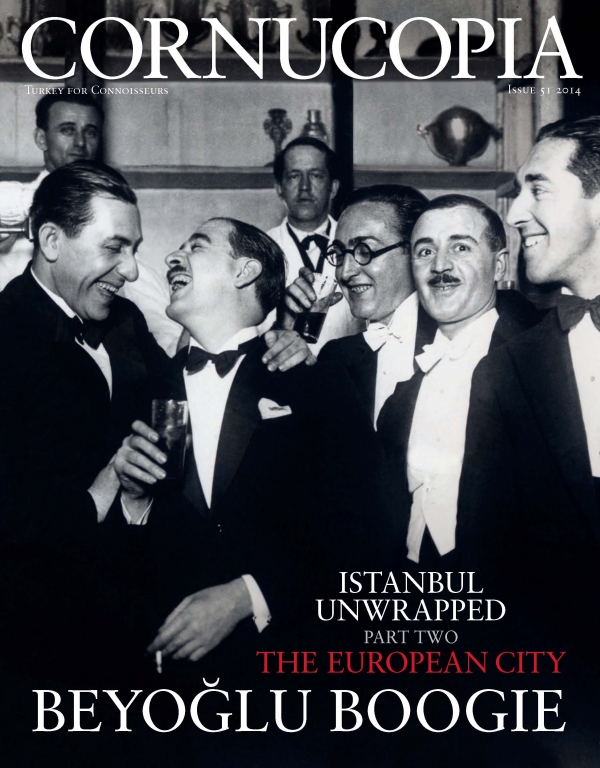Buy or gift a stand-alone digital subscription and get unlimited access to dozens of back issues for just £18.99 / $18.99 a year.
Please register at www.exacteditions.com/digital/cornucopia with your subscriber account number or contact subscriptions@cornucopia.net
Buy a digital subscription Go to the Digital EditionThe world’s grandest chalet was built by Abdülhamid II for the visit of Kaiser Wilhelm II in 1889 and was a powerhouse of political activity in the final years of the empire. Today the house in the grounds of Yıldız Palace, on a hill in Istanbul, is all but forgotten. Philip Mansel treads softly through its silent halls. Photographs by Fritz von der Schulenburg
The Yıldız Palace is a time capsule of Ottoman art nouveau, an expression in wood and stone of the style and reign of the enigmatic Sultan Abdülhamid II (1876–1909). Yıldız – from the Turkish word for star – so named because it was easy to see the stars there – is set on a hill above the Çırağan Palace, overlooking the Bosphorus.
Since the early 17th century there has been an imperial kiosk here, to which more substantial buildings were added in the 1860s by Sultan Abdülaziz. In March 1877, during the Russo–Turkish war, his nephew Abdülhamid moved to Yıldız from the Dolmabahçe Palace. He had an acute sense of his vulnerability, and Yıldız was less exposed to attack from land or sea. By the end of his reign Yıldız had become the last great power statement of the Ottoman dynasty, at once a palace, a ministry, a military headquarters and a university campus.
Behind the high palace walls were barracks, factories, schools (one of which, the school for railway engineers, developed into the present Yıldız University); a library, an observatory, a theatre, and a zoo; an exhibition hall for the products of the Sultan’s factories; museums of weapons, entomology and ornithology; and pavilions in Japanese, Persian and French styles.
In the city of Istanbul, public buildings such as the Central Post Office in Eminönü and the Land Registry offices in Sultanahmet, which can still be admired today, were being built in neo-Turkish styles. Yıldız, however, shows the personal preferences of the sultan were more European. This palace has many versions of Art Nouveau, of which the Chalet Kiosk (Şale Köşkü in Turkish) is the most remarkable…
To save its fine architecture, a volcanologist has come up with a plan: to turn Kula into an elegant spa town by tapping its plentiful thermal springs. By Roger Williams. Photographs by Jean Marie del Moral and Roger Williams
Three köftes still stand out in my memory. Just thinking of them makes my taste buds ache. The first was in my early childhood: freshly grilled cizbiz kofte, a round patty the size of a flattened walnut, so named because it makes a delicious ‘jiz-biz’ sizzling sound as it cooks…
More cookery features
High in the Toros Mountains, Chris Gardener finds the remote Kasnak Forest carpeted with peonies in spring. Photographs by Kate Clow
The Russian artist Ivan Aivazovsky may have been derided by the avant-garde, but his dreamy seascapes and atmospheric panoramas won him patrons in high places. Ivan Samarine rediscovers a 19th-century virtuoso
Visitors to 1830s Istanbul were astonished to hear the strains of Rossini and Donizetti performed by Ottoman bands. As Emre Aracı reveals, Western music was the passion of Mahmud II








The London Academy of Ottoman Court Music, with Emre Aracı. Produced by Ates Orga,






Cornucopia works in partnership with the digital publishing platform Exact Editions to offer individual and institutional subscribers unlimited access to a searchable archive of fascinating back issues and every newly published issue. The digital edition of Cornucopia is available cross-platform on web, iOS and Android and offers a comprehensive search function, allowing the title’s cultural content to be delved into at the touch of a button.
Digital Subscription: £18.99 / $18.99 (1 year)
Subscribe now